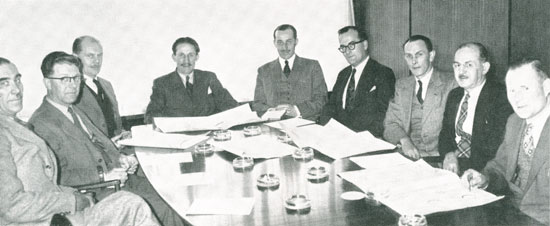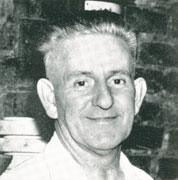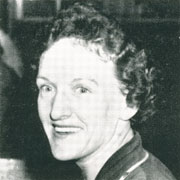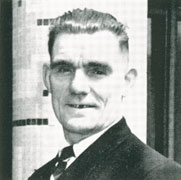FLINT FACTORY
Being Centenary year of the firm, it is worth noting that this factory was the original “Glasshouse” one hundred years ago. We are proud of the fact that from such a humble start, we should produce a growing concern as this firm is certainly today.
Looking back over the years, when Jackie Fairburn and Jimmy Casey were making opalique and tortoiseshell ware, I wonder what they would have said then, if anyone had forecast what these works would be — I don’t suppose they would have believed it. Talking of old times, what a difference in the technique nowadays — machinery has taken over considerably: the “melters” have disappeared now, also “sticker ups”, leaving now only “gatherers”, “pressers” and’ ‘turner outs”.
You know, Flint Factory has certainly had its share of long service, indeed, still has, such as G. Worthy, Jim Barnes, J. B. Smales and Jim Smith, and among the girls Alice Brown, E. Foster and May Wright, who are still with us and likely to be for some time yet.
An interesting note here regarding old times: clocking in, as such, was non-existent, but a big bell used to summon people to work and if they weren’t in when the bell went, then they weren’t allowed to start. However, times have changed and we have streamlined clocks and are allowed two to three minutes grace, but of one thing I am certain, timekeeping has not improved by any means! Give me the good old days.
However, the past is behind, what of the future? As regards this factory, there are talked-of improvements, but how, what and when, we do not know. But come what may, they will be very welcome, as conditions could be much better, especially when there are so many developments taking place all around us, we do feel like the orphans we are.
A few words regarding production, to complete this letter, although domestic ware and tumblers are now out, we are kept busy with other lines; Headlamp glasses, Signal glasses and Industrial ware. The semi-auto boys, J. Leonard, S. Black, J. D. Smales and W. Hood, being kept especially busy with Lucas lenses — as is often said here, “Where do all these lenses go to”, we know there are more cars than ever on the road, but at the rate we produce them, every working man should have one, (if he could afford it!)
APPARATUS FACTORY
Since the last issue of “Mixed Batch”, we have had S. Hunter, D. Lee and R. Hart back from the forces. The best of luck lads.
Congratulations to C. Easton on his appointment as Specification Officer. Cyril, who has just returned from his National Service, made quite a name for himself in the forces as a sportsman. He played tennis at Wimbledon for an R.A.F. team, and also won a number of trophies in other of his sporting activities.
During his National Service, Ray Hart took up athletics and very soon was a “crack” runner, so famous that the local paper devoted a full length column to Ray and his achievements.
After a lot of persuasion, we managed to get Ray to give us his impressions of National Service and we hope to print these in a later issue.
The Apparatus Factory Male Voice Choir was in good voice during the visit of the Sunderland Football team. Unfortunately the rendering of “Down and down we go” was not appreciated by the players.
Miss Ivy Foster of the Inspection Department and Mr. Alan Dale of the Apparatus Factory have announced their engagement. We offer them both our sincere wishes for their future happiness and have had a poem specially written for the occasion:
Bring out your bunting and lets be gay,
For Ivy and Alan have named the day.
The bug of love has bitten them both
And lo and behold, they’ve plighted their troth.
Their love is a beacon that shines from afar,
Like a lighthouse at sea, or a falling star.
It burns in their hearts and kindles a flame
And very soon Ivy will change her name.
Their stolen moments at lunch by the lehr
And their whispered “sweet nothings” of words so dear
Have led to that moment of sweet happiness,
The day when she stands in her flowing wedding dress.
So Alan and Ivy, best wishes from us all!
And may all your troubles be very small.
The A.F. Football team were defeated in the first round of the departmental competition. This defeat, however, has only made the lads more eager to excel on other sporting fields. Consequently, we have twelve teams in the Bowls Tournament. We feel that this year, one of our teams can win this competition and we say this without bias (sorry) jack or wood.
Mrs. D. Bell and Mr. T. Blackburn have been off work for a number of weeks owing to ill health. We hope that they will both soon enjoy good health.
It was pleasing to note that the A.F. poet and the A.F. cartoonist were mentioned in the Editor’s notes in the last issue. Does this mean immortal fame?
|







